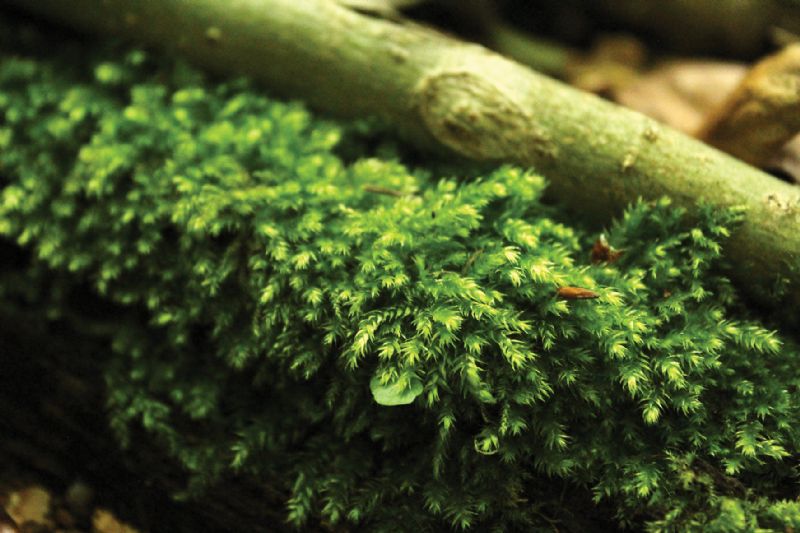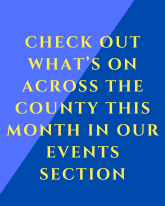- Home
- News, Articles & Reviews
We are hiring! Please click here to join our growing magazine delivery team in Gloucestershire!
Areas
Pets & Wildlife
Archive

Pioneers of plants on land
All Areas > Pets & Wildlife > Wildlife Matters
Author: Anna McQuillan, Posted: Tuesday, 24th June 2025, 09:00
Recent fieldwork has inspired an obsession for a group of organisms for which I previously did not give credit. Ladies and gentlemen, you’re about to hear all about moss.
Moss is within a group called the bryophytes (bryo- “moss” and -phyte “plant”) with the liverworts. They are incredibly widespread with a maximum of 25,000 species globally, even in Antarctica. Here in the UK, we are spoilt for choice, boasting 1,000 species. Moss is found anywhere in healthy habitats, but commonly found in woodland and near moisture, particularly in our temperate rainforests.
Moss is old: older than the dinosaurs and even older than trees! It is theorised to have originated from a form of pioneer algae, 450 million years ago. This means algae that once lived in our oceans found its way onto land and managed to survive and reproduce, creating an entire new form of organism. Some scientists believe the spread of moss on land led to several ice ages, which developed ice caps at the world’s poles.
How does moss work?
Moss pre-dates the evolution of roots and leaves. Yes, it is really that old. Without these structures, it can’t grow very large. Instead, it sips water straight out of its surroundings. Like most plants, it makes energy from the sun’s rays and retains lots of carbon. There is actually a team of Cambridge scientists using moss to develop a new renewable energy source.
You may find the reproductive system of moss rather alien. Unlike most organisms, mosses have different types of reproduction, cycling them in a process called alternation of generations. First, a moss will use its male and female parts to reproduce with itself. Then in a second stage of reproduction, it creates a spore which is detached from the parent-plant and forms a new one elsewhere.
All shapes and sizes
One of my favourite things about moss is its grand variety. You will find different mosses whether you’re looking at a carpet of undergrowth, on an old mouldy log, or on the trees themselves. The stuff that’s growing on the roof? That’s also moss!
A personal favourite is the Cypress leaved plait-moss (Hypnum cupressiforme) which is pictured in the close-up photo. You can see why it is named so; it has an intricate pattern showing its segment-by-segment way of growing.
Moss seeking
For good populations of moss, you will want to look in woodlands at low elevation – this means there is likely to be a good supply of water, which moss requires, especially for reproduction. Woodlands mean lower light levels, which avoids drying moss out and they also provide abundant other plants which moss can take moisture directly from.
In Gloucestershire, I recommend visiting literally any woodland, but also areas with lots of water. Tewkesbury and South Cerney are likely treasure troves due to all the water. Additionally, Lower Wood in South Gloucestershire is the largest ancient woodland in the south-west, making it a strong spot for loads of cool moss.
Happy moss finding!Other Images
Copyright © 2025 The Local Answer Limited.
Unauthorized use and/or duplication of this material without express and written permission from this site's author and/or owner is strictly prohibited. Excerpts and links may be used, provided that full and clear credit is given to The Local Answer Limited and thelocalanswer.co.uk with appropriate and specific direction to the original content.More articles you may be interested in...


© 2025 The Local Answer Limited - Registered in England and Wales - Company No. 06929408
Unit H, Churchill Industrial Estate, Churchill Road, Leckhampton, Cheltenham, GL53 7EG - VAT Registration No. 975613000You are leaving the TLA website...
You are now leaving the TLA website and are going to a website that is not operated by us. The Local Answer are not responsible for the content or availability of linked sites, and cannot accept liability if the linked site has been compromised and contains unsuitable images or other content. If you wish to proceed, please click the "Continue" button below:




